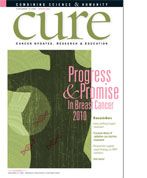Guiding the Use of Partial-Breast Radiation
The controversy over the use of accelerated partial-breast radiation (APBI) is reflected in the recommendations from the professional organizations that oversee radiation oncology and surgery.
The controversy over the use of accelerated partial-breast radiation (APBI) is reflected in the recommendations from the professional organizations that oversee radiation oncology and surgery.
The American Society for Radiation Oncology (ASTRO) issued its first-ever consensus statement in 2009 to provide guidance regarding the use of APBI outside of a clinical trial and to serve as a framework to promote additional clinical investigations into the optimal role of APBI in the treatment of breast cancer. The guidelines, which were written for clinicians, indicate that “conservative patient-selection criteria” be followed. Specifically, the guidelines offer a long list of criteria but exclude women with ductal carcinoma in situ (DCIS) and those who show multicentricity or multiple locations of tumor.
Those suitable, according to the guidelines, include women over the age of 60 with tumors smaller than 2 centimeters, pathologically negative nodes and positive estrogen-receptor status.
The American Society of Breast Surgeons has indicated that APBI can be used for women aged 45 and older who have either invasive or DCIS disease, tumors 3 centimeters or less with negative margins and a negative sentinel lymph node.
Both organizations recommend patients discuss the risk and benefit of the treatment with their radiation oncologist. The guidelines will certainly evolve as more data comes in.
FDA, Cancer Vaccine Updates and a Misguiding of Breast Cancer Treatment
February 5th 2024One cancer vaccine may still be years away from being available, a breast cancer test may be misguiding treatments for Black women and the review of two oncology regimens are being expedited by the FDA.
Listen
